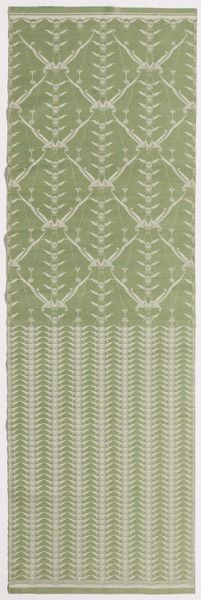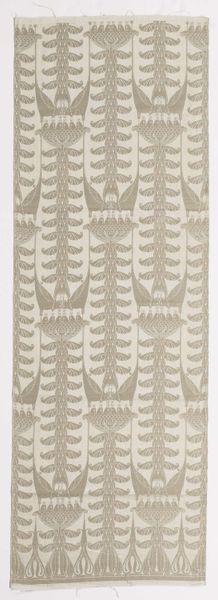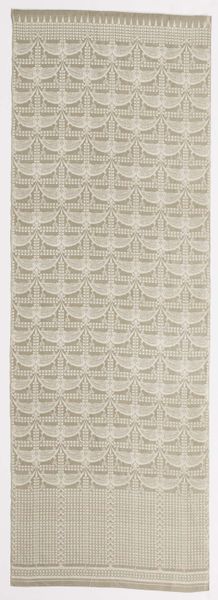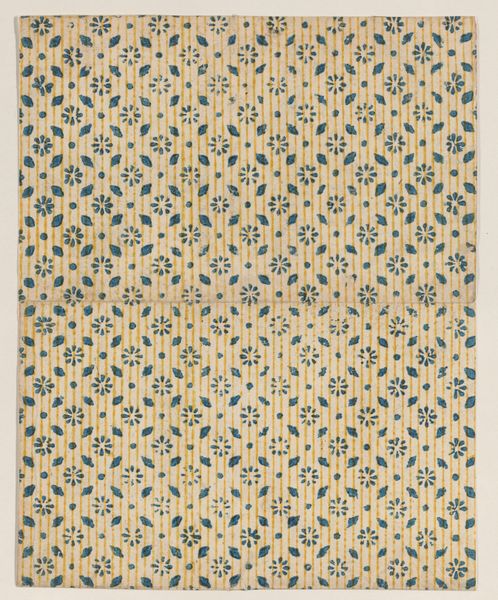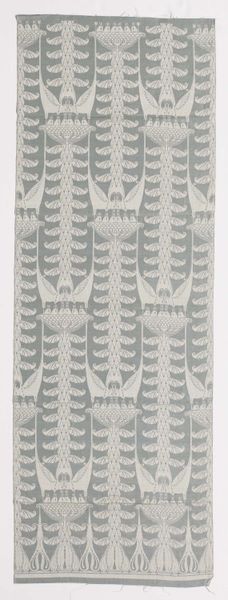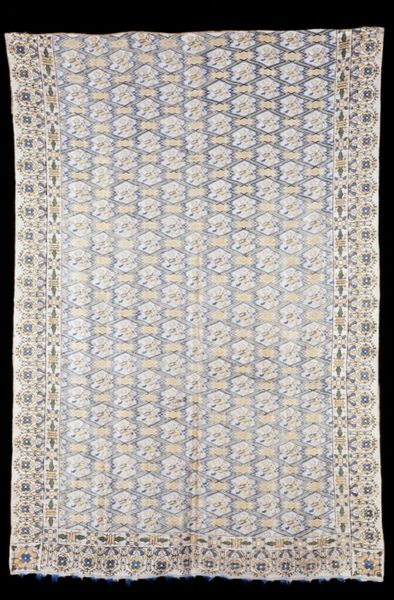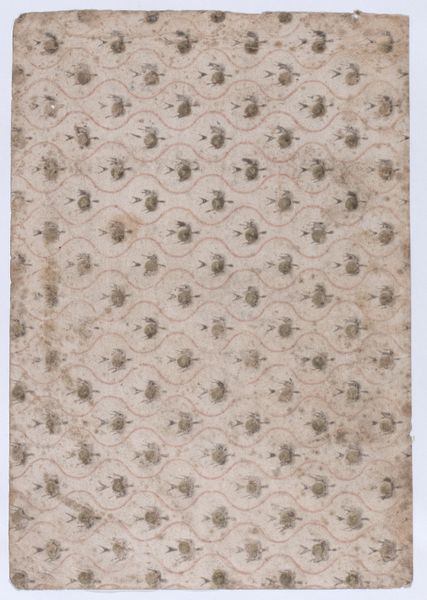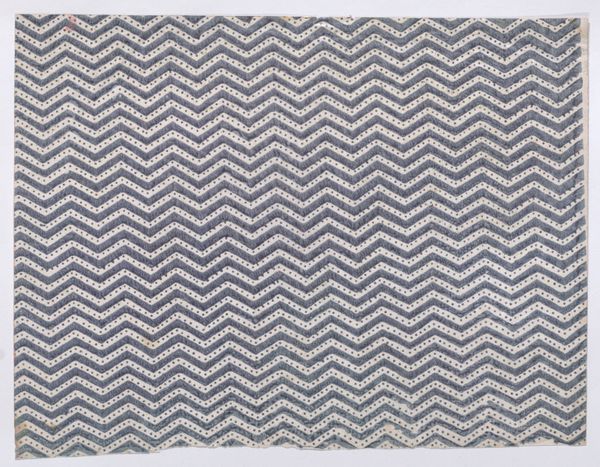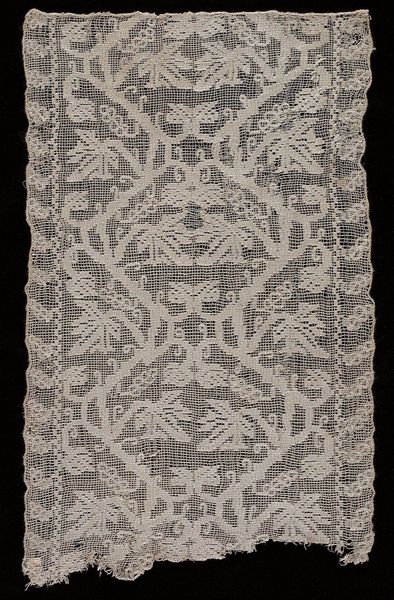
weaving, textile
#
organic
#
art-nouveau
#
pattern
#
weaving
#
textile
#
organic pattern
#
textile design
#
decorative-art
Dimensions: height 136.0 cm, width 58.2 cm
Copyright: Rijks Museum: Open Domain
Editor: We're looking at "Wandbespanning met dessin 'Wilde Vlucht,'" a textile wall hanging designed by Chris Lebeau between 1911 and 1915. It's currently at the Rijksmuseum. The repetitive pattern feels both soothing and strangely energetic. How do you interpret this work? Curator: This piece really encapsulates the tension inherent in Art Nouveau—between the desire for beauty and the societal shifts happening at the time. It was crafted during a period marked by burgeoning industrialization and anxieties around modernity, right? The 'Wilde Vlucht,' the 'Wild Flight,' suggests an attempt to escape these constraints through art. Editor: Escape how? Curator: Look at the organic forms; the way the design evokes nature. There’s a clear rejection of the rigid, mass-produced aesthetic that was becoming increasingly dominant. Lebeau and his contemporaries were deliberately choosing handcrafted methods and organic motifs to reclaim a sense of individuality and connection to the natural world, as opposed to the alienation of industrial life. Who was this art for, do you think, and where might it have been displayed? Editor: Perhaps for wealthier homes, signaling good taste but also maybe…progressive values? Like, a rejection of Victorian stuffiness? Curator: Exactly! These designs offered an alternative domestic landscape. More importantly, this embrace of nature can also be viewed as deeply intertwined with the social justice movements of the time. Think about the relationship between industrial capitalism, exploitation of natural resources, and worker exploitation. This artwork implicitly critiques those structures by presenting an alternative based on harmony with nature. So what might this design be communicating about societal values during its historical timeframe? Editor: It's almost a quiet rebellion, woven into the fabric of everyday life. I initially just saw a pretty pattern, but understanding the context adds so much more depth. Curator: Indeed! Seeing art as part of a larger conversation makes us ask better questions of it, but also ourselves.
Comments
No comments
Be the first to comment and join the conversation on the ultimate creative platform.
